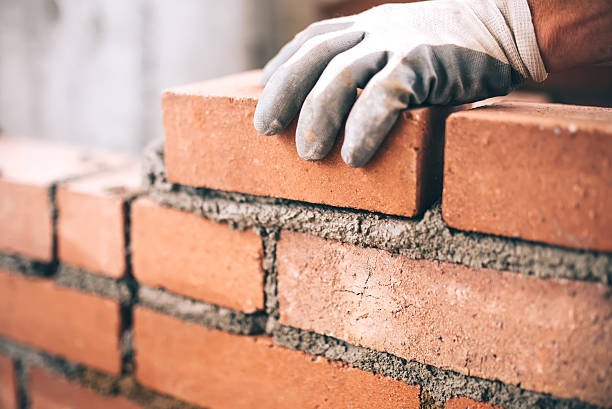Expert Step Repair Services: Guarantee Security and Longevity
Opening the Tricks of Sustainable Stonework Building And Construction Practices for Eco-Friendly Structures
Among the myriad techniques to eco-friendly structure, sustainable masonry building and construction stands out as a tried and true and sturdy method that holds a wide range of untapped potential. From the selection of materials to cutting-edge construction methods, the keys to achieving sustainability within stonework building and construction are multifaceted and appealing.
Benefits of Sustainable Stonework Building And Construction
Welcoming lasting masonry building practices not only lowers ecological effect however also offers lasting financial advantages to home builders and neighborhoods. By utilizing products like recycled blocks, blocks, and rocks, contractors can substantially reduce the carbon footprint of their tasks while advertising resource performance. Furthermore, sustainable stonework construction techniques, such as correct insulation and thermal mass buildings, can improve energy performance within buildings, leading to lowered operational prices gradually.
Furthermore, the resilience and strength of masonry frameworks add to long-term economic benefits. Buildings created making use of lasting stonework methods frequently need much less repair and maintenance, converting to cost financial savings for building contractors and homeowner. The longevity of stonework products also makes sure that structures stay steady and secure, minimizing the need for regular improvements or replacements.
Eco-Friendly Masonry Products
Making use of environment-friendly stonework products is a critical step towards enhancing the sustainability of construction techniques and decreasing ecological effect while optimizing long-lasting economic advantages. Lasting masonry materials are sourced, generated, and used in a manner that reduces total environmental impact. Lasting concrete blocks incorporate recycled accumulations and may feature better insulation buildings, contributing to power efficiency in structures.
Moreover, natural materials like adobe, rammed earth, and straw bundles give outstanding thermal mass residential or commercial properties, decreasing the requirement for heating and cooling power. These products are usually locally readily available, advertising local economic situations and decreasing transportation-related carbon exhausts. By selecting environment-friendly stonework materials, building and construction jobs can substantially reduce their environmental impact and add to the production of healthier, extra lasting developed environments.
Energy-Efficient Masonry Methods
Power efficiency plays a critical duty in improving the sustainability of stonework construction methods. One crucial energy-efficient stonework method is the usage of thermal mass, which entails incorporating dense materials like concrete or brick right into the structure's structure to absorb and store heat.

Advancements in Sustainable Stonework
Recent improvements in sustainable stonework practices have brought around ingenious techniques that are improving the construction market. One such innovation is the advancement of self-healing concrete, which makes use of germs installed within the concrete to heal fractures autonomously. This breakthrough not only lowers maintenance costs yet additionally enhances the resilience of masonry structures, adding to their sustainability.
An additional noteworthy technology is the usage of recycled accumulations in stonework building and construction - masonry contractor. By including materials such as smashed ceramic waste or recycled glass into concrete blends, home builders can lower the environmental effect of building tasks while maintaining structural stability. This technique not just diverts waste from garbage dumps however additionally next preserves natural resources, making it an essential innovation in lasting stonework building and construction
Furthermore, the integration of digital style tools, such as Building Info Modeling (BIM), is changing the means stonework frameworks are planned and constructed. BIM allows for more accurate computations, minimized material waste, and enhanced energy efficiency, ultimately resulting in more sustainable structure techniques. These innovations jointly indicate a promising future for lasting masonry building in the era of environment-friendly structures.
Future Trends in Masonry Sustainability
With the innovative strides made in sustainable stonework methods, the future trends in masonry sustainability are poised to more change the building and construction market. One of the key fads forming the future of masonry sustainability is the raised assimilation of innovation. Improvements such as Building Information Modeling (BIM) and digital truth simulations are being utilized to optimize stonework building and construction procedures, bring about minimized material waste and improved power performance in structures.
In addition, the advancement of novel lasting materials is established to play a substantial role in boosting the eco-friendliness of masonry construction. masonry contractor. Advancements like self-healing concrete, recycled helpful hints aggregates, and bio-based binders are obtaining grip for their capacity to decrease environmental influence while preserving architectural stability

Final Thought
To conclude, sustainable masonry building methods supply countless benefits for environment-friendly structures. By making use of eco-friendly materials and energy-efficient techniques, masonry can contribute to a more sustainable developed find environment. Advancements in lasting stonework are continually being created to better boost the ecological efficiency of structures. Looking in the direction of the future, the fad of stonework sustainability is anticipated to expand, bring about even more eco-friendly and energy-efficient building and construction techniques in the years ahead.